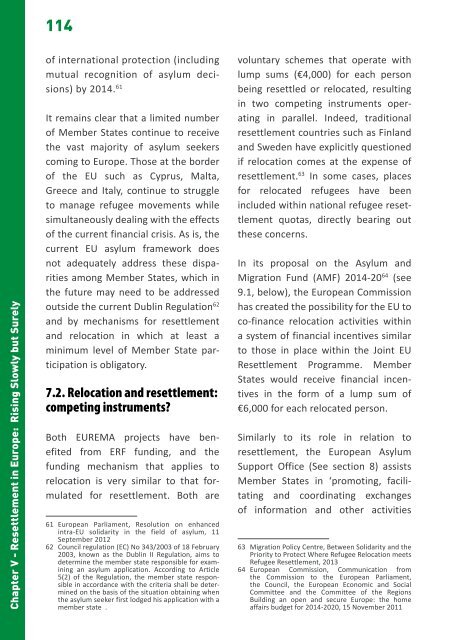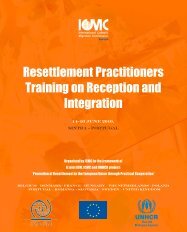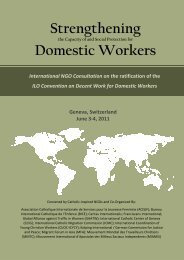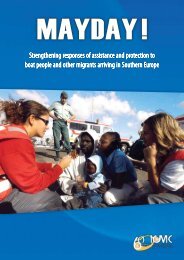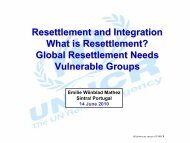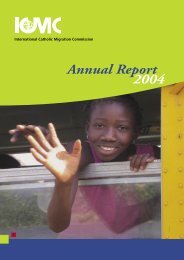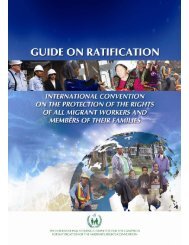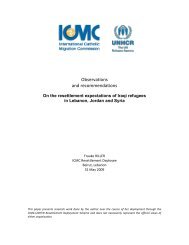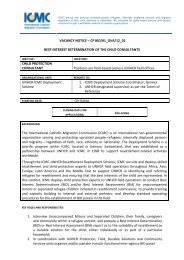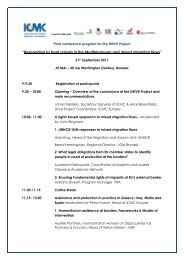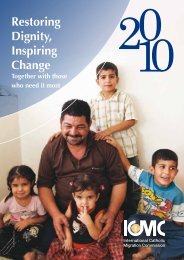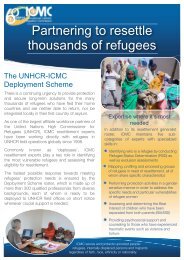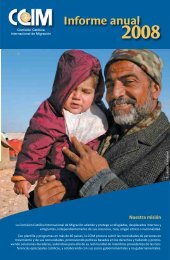ICMCEUROPE WelcometoEurope.pdf (5.89 MB)
ICMCEUROPE WelcometoEurope.pdf (5.89 MB)
ICMCEUROPE WelcometoEurope.pdf (5.89 MB)
You also want an ePaper? Increase the reach of your titles
YUMPU automatically turns print PDFs into web optimized ePapers that Google loves.
114<br />
Chapter V - Resettlement in Europe: Rising Slowly but Surely<br />
of international protection (including<br />
mutual recognition of asylum decisions)<br />
by 2014. 61<br />
It remains clear that a limited number<br />
of Member States continue to receive<br />
the vast majority of asylum seekers<br />
coming to Europe. Those at the border<br />
of the EU such as Cyprus, Malta,<br />
Greece and Italy, continue to struggle<br />
to manage refugee movements while<br />
simultaneously dealing with the effects<br />
of the current financial crisis. As is, the<br />
current EU asylum framework does<br />
not adequately address these disparities<br />
among Member States, which in<br />
the future may need to be addressed<br />
outside the current Dublin Regulation 62<br />
and by mechanisms for resettlement<br />
and relocation in which at least a<br />
minimum level of Member State participation<br />
is obligatory.<br />
7.2. Relocation and resettlement:<br />
competing instruments?<br />
Both EUREMA projects have benefited<br />
from ERF funding, and the<br />
funding mechanism that applies to<br />
relocation is very similar to that formulated<br />
for resettlement. Both are<br />
61 European Parliament, Resolution on enhanced<br />
intra-EU solidarity in the field of asylum, 11<br />
September 2012<br />
62 Council regulation (EC) No 343/2003 of 18 February<br />
2003, known as the Dublin II Regulation, aims to<br />
determine the member state responsible for examining<br />
an asylum application. According to Article<br />
5(2) of the Regulation, the member state responsible<br />
in accordance with the criteria shall be determined<br />
on the basis of the situation obtaining when<br />
the asylum seeker first lodged his application with a<br />
member state .<br />
voluntary schemes that operate with<br />
lump sums (€4,000) for each person<br />
being resettled or relocated, resulting<br />
in two competing instruments operating<br />
in parallel. Indeed, traditional<br />
resettlement countries such as Finland<br />
and Sweden have explicitly questioned<br />
if relocation comes at the expense of<br />
resettlement. 63 In some cases, places<br />
for relocated refugees have been<br />
included within national refugee resettlement<br />
quotas, directly bearing out<br />
these concerns.<br />
In its proposal on the Asylum and<br />
Migration Fund (AMF) 2014-20 64 (see<br />
9.1, below), the European Commission<br />
has created the possibility for the EU to<br />
co-finance relocation activities within<br />
a system of financial incentives similar<br />
to those in place within the Joint EU<br />
Resettlement Programme. Member<br />
States would receive financial incentives<br />
in the form of a lump sum of<br />
€6,000 for each relocated person.<br />
Similarly to its role in relation to<br />
resettlement, the European Asylum<br />
Support Office (See section 8) assists<br />
Member States in ‘promoting, facilitating<br />
and coordinating exchanges<br />
of information and other activities<br />
63 Migration Policy Centre, Between Solidarity and the<br />
Priority to Protect Where Refugee Relocation meets<br />
Refugee Resettlement, 2013<br />
64 European Commission, Communication from<br />
the Commission to the European Parliament,<br />
the Council, the European Economic and Social<br />
Committee and the Committee of the Regions<br />
Building an open and secure Europe: the home<br />
affairs budget for 2014-2020, 15 November 2011


